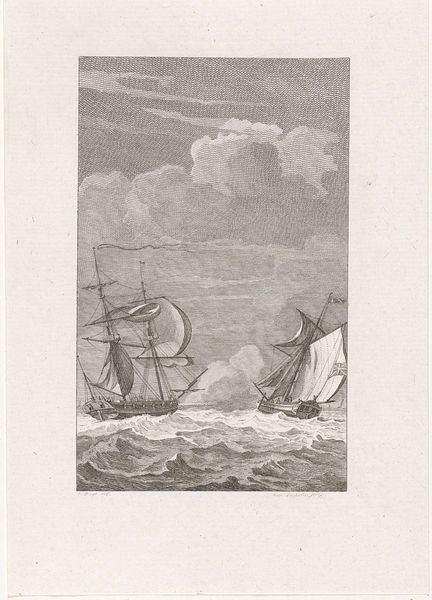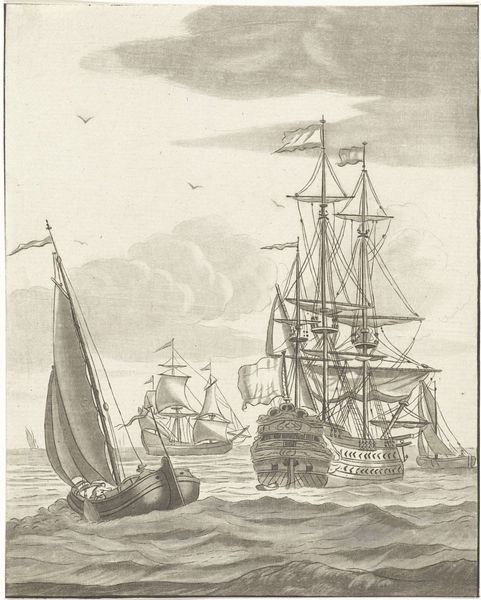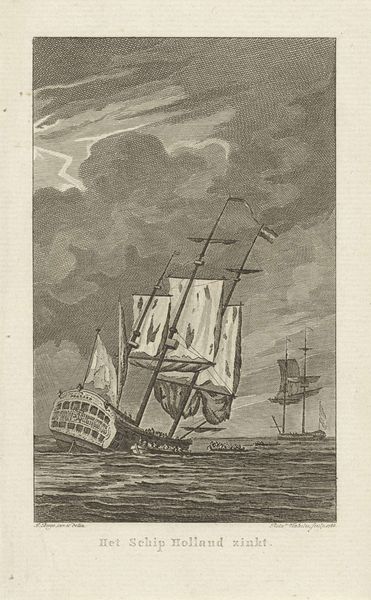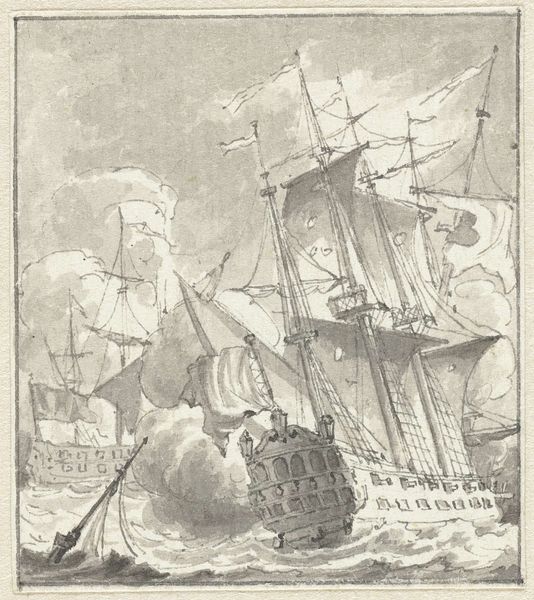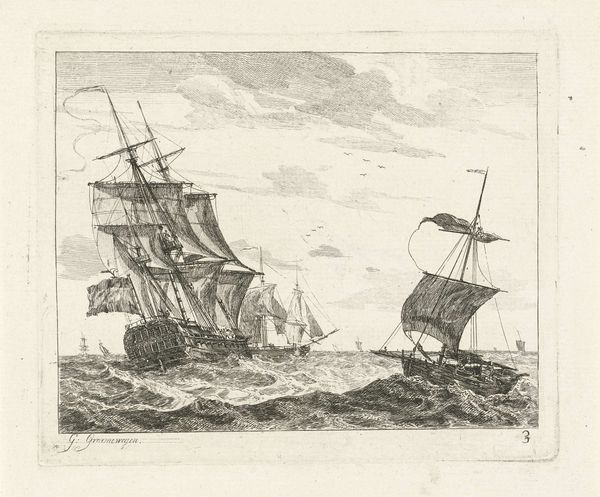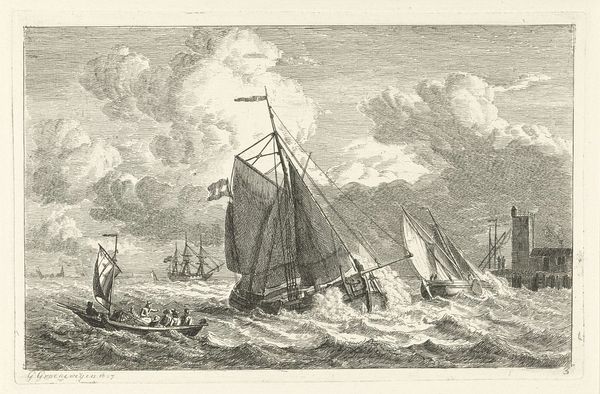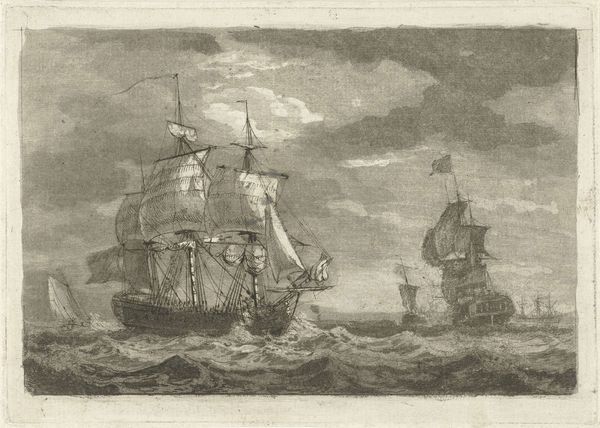
print, engraving
# print
#
landscape
#
romanticism
#
engraving
Dimensions: height 115 mm, width 75 mm
Copyright: Rijks Museum: Open Domain
Editor: Here we have "Man in een roeiboot met op de achtergrond een zeilschip", or "Man in a Rowboat with a Sailing Ship in the Background", created around 1830 by Philippus Velijn. It's an engraving. The stormy skies really give this piece a sense of drama. How do you interpret the work, especially considering its historical context? Curator: That drama is key to understanding its place within the Romantic movement, which was all about celebrating emotion and the sublime power of nature. Think about what a sailing ship and a small rowboat represent in the early 19th century. Who has access to each and what did this imply socially? Editor: Well, a large sailing ship suggests wealth, power, global trade, and exploration, which likely would have been linked with colonial expansion at this time. The rowboat seems much more… modest? Curator: Exactly. And who is the 'Man' referenced in the title? The inscription ‘De Heer van Couver’ tells us it depicts a member of a notable Dutch family. While ostensibly a simple landscape, consider the possible narrative it presents: an individual against the backdrop of grand maritime ventures. The Romantic fascination with nature's grandeur is definitely here, but we must also consider who *benefits* from that grandeur. It raises questions, doesn't it, about power dynamics? How do the means to travel inform someone’s world view? Editor: That's fascinating! So, it's not just about the pretty landscape; it's also subtly commenting on class and the complex realities behind maritime exploration? Curator: Precisely! Artists aren't just reflecting the world; they're actively shaping our understanding of it. Romanticism gave way to representing all forms of labor - the ship and the oars. Editor: I’ll never look at a maritime scene the same way again! There’s so much more to unpack than I initially realized. Curator: That's the power of art history: seeing beyond the surface. I will need to consider if it aligns with romantic era of the 19th century.
Comments
No comments
Be the first to comment and join the conversation on the ultimate creative platform.
